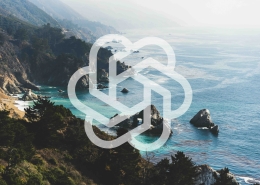How to Content Cleanse
Updated: April 28, 2022
Do you ever wonder what happened to that series of blogs you wrote years ago and their popularity with your target audience? A Content Audit or Cleanse helps filter out which content to remove, repurpose, or retain on your website. Although clearing old content out of your website isn’t the only way to cleanse your website. Here are a few things to think about next time you Content Cleanse.
Content Popularity Check
An excellent way to determine the interest and impact of content on your site is doing a content popularity check—the best way to do this is through your Google Analytics account. The content with most sessions and session duration will give you a good indicator of what specific content to keep on the site and provide additional insight into what content topics are most popular with your audience.
To achieve this, log on to your Google Analytics account and in the left side navigation bar, go to Behavior and select landing pages. Then, determine a specific date range – we suggest a minimum of two years. Then, look to see what URL landing pages are the most popular.
One item to consider when removing content is to delete the purged content but be sure to include a “301 Redirect” to a similar page or area of the site that would relate to the deleted content. For more on setting up a 301 Redirect, visit the site of Bruce Clay here.
Duplicates of Content
Google defines duplicate content as ‘substantive blocks of content within or across domains that match other content or are appreciably similar. In other words, how many times on your website do you talk about your visitors’ favorite go-to spot within your destination? Or how many ways are you using that same piece of content that you wrote a year ago? These are examples of duplicate content. This can cause inconsistent URL structures (or the same URL with one or more things changed), which will harm your SEO. It’s imperative that as a DMO or CVB that you refrain from duplicating your content.
If you have duplicate content on your website, Google may prevent your content from showing up as a result on a search engine. So how do you check for the same content you may not be aware of on your site? Check out MOZ.com, which will run through your site and find any duplicate content. Siteliner is a more in-depth tool to find duplicate content on your site.
Landing Pages vs. Listings
Every travel destination has plenty of industry partners in the form of restaurants, attractions, and activities listed on your website.
Having two different places per partner listing can hurt your SEO and be more time-consuming to edit since you have to edit two other locations when doing updates. Now is the time to check your site to ensure that your listings have one main page, and if they have an extended landing page, the content should be more detailed and not just duplicate the original listing.
Experience Burnsville, Minnesota, is an excellent example as they break their partner listings down to various categories like Things to Do, Eat & Drink, Events, and Places to Stay. These categories have a listing that features an exact page URL and even includes additional integrated content like TripAdvisor reviews.
Here is some additional information via the TwoSix blog archive on How-To on Create an Effecting Partner Listing,
Make Your Content Evergreen — including festivals and events
Evergreen content is content that can stay relevant for an extended amount of time. We often refer to this as “sustainable content that can live on the search engines for an extended period”. Evergreen content must have SEO-friendly titles and URLs built on search popularity. Think of this in terms of how-to’s/tutorials, guides, list posts, etc., plus adding your city or destination name in the title.
When developing evergreen posts or landing pages for specific events or festivals, avoid using dates in the first few paragraphs of your content piece. If exact dates are needed, include them after the second or third paragraph, and be sure to update them when the event’s new dates are announced.
Evergreen content is useful because it can help increase organic SEO listings, engagement, and brand awareness.
Following these things to do to content cleanse can help with clearing up your website, optimize your SEO and make your content evergreen. For more tips and tricks make sure to visit our blog.








